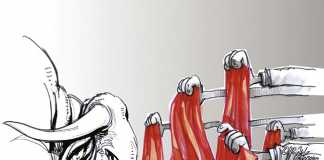
African horse sickness, Rift Valley fever, and foot-and-mouth disease (FMD) are just some of the animal diseases that have caused panic among veterinarians and farmers this year. One question is constantly asked: would vaccines be available if we experienced an outbreak?
This is where a vaccine bank (also called a vaccine stockpile or strategic vaccine reserve) can play an important role, as it is potentially the single most powerful tool against disease control for both government and the private sector.
It’s important to note that vaccine banks focus on proven vaccines, and not those that still need to prove their worth. In other words, this is not about new developments, but rather about cherishing and maintaining the old.
While these banks have been used extensively elsewhere in the world for decades, we haven’t seen them established in Southern Africa or the rest of the continent.
For decades, veterinary vaccine banks have formed an important part of a contingency plan at both local and regional level, constituting an important tool in managing infectious diseases’ emergence, control, and response leading to recovery.
Years ago, vaccine banks were established as part of companies’ and countries’ emergency responses to infectious or zoonotic disease outbreaks or introduction into new areas.
While the historic role of vaccine banks was as part of a response to animal disease outbreaks or as a countermeasure to new diseases, the extended role of these banks is to control critically important diseases identified by veterinary authorities as requiring a well-planned control programme through vaccination.
Various types of vaccine banks
There are several ways in which vaccine banks can be categorised. A vaccine bank can consist of physical or virtual reserves, or maintenance of production capacity. Physical reserves are vaccine antigens or ready-to-use vaccines. In these instances, the vaccine will be bottled in its final commercial vials and can be used immediately in bulk.
This is perfect for a vaccine that can be used broadly. These vaccines will usually be kept in cold rooms from where they can easily be dispatched when the need arises. Boehringer Ingelheim in Austria is an excellent example of this. The company maintains about 17 FMD vaccine banks for various countries and organisations across the world.
Virtual vaccine banks are built on an agreement between the vaccine bank owner and vaccine manufacturers. In this instance, the vaccines are managed in such a way that they will be available when the need arises, and therefore inventory management by vaccine manufacturers is very important.
This type of bank works very well for vaccines that have to be manufactured in a specific time frame and under specific conditions. Interestingly, virtual banks are the model currently being used by the World Organisation for Animal Health (OIE).
The three main diseases that they are concerned with controlling via virtual vaccines are ovine rinderpest (also known as peste des petits ruminants, or PPR), rabies and FMD.
Maintenance of the production capacity encompasses management of the vaccine seed material and the maintenance of knowledge by the manufacturers by conducting research activities around the target vaccines.
This is where inventory management becomes critical. A vaccine bank should, for example, ensure that it always carries about 50 000 doses. If this is the agreed-upon volume, the stock must always be available. It’s also important for the stock to be maintained on a first-in, first-out basis. This ensures that the vaccine bank isn’t burdened with expired stock.
Teamwork
A network of vaccine banks can also be extremely helpful, and these are established through collaborative agreement. The North American FMD Vaccine Bank is an excellent example, with an agreement that has been in place between the US, Mexico and Canada since 1982.
The establishment, maintenance and implementation of vaccine banks are reliant on many prerequisites, which include a strategy for the physical or virtual vaccine stockpile, a legislative framework, regulatory arrangements, effective supply chain mechanisms, and adequate surveillance systems.
An opportunity exists for South Africa and the entire Southern African Development Community (SADC) region to use the concept of a vaccine bank in preventing the introduction of economically devastating diseases that constitute imminent threats to its livestock sectors.
The characteristics of a PPR vaccine to be considered for a vaccine bank in South Africa and other SADC countries currently free of this disease can be taken as an example. We need to take information hubs seriously, because many important vaccines haven’t been manufactured in years.
If there is a crisis, we might end up in a situation where nobody remembers how to manufacture the required vaccine.
This is a problem that was best illustrated by the outbreak of rinderpest in cattle. However, Japan is now maintaining the capacity to produce this vaccine, and if there is another outbreak, they will be able to respond quickly.
The focus of vaccine banks
A vaccine bank should also be very clear on its aim. Some vaccine banks will focus on emergency preparedness for epizootic diseases. Most vaccine banks in national programmes are developed to combat such emergency diseases.
But a vaccine bank can also be established for disease control or eradication. The OIE, for instance, has rabies and PPR vaccine banks, aimed at either sensibly controlling and reducing the impact of these diseases, or eradicating them entirely.
Vaccine banks are playing a vital role in the global eradication of rabies. Vaccines from banks should always adhere to the minimum regulatory requirements of the country where a vaccine is intended to be used.
Full registration unnecessary
Full registration of each vaccine may not be necessary, especially in case of emergencies. However, countries will generally require at least a minimum registration dossier, consisting of a summary of the product’s characteristics.
In an emergency, it will then be quicker and easier to have the product registered for the specific country. A country could also request the vaccine’s registration from the country of origin.
Supply chain
A properly developed supply chain is also critical to the implementation of a vaccine bank. The reaction to COVID-19 is an excellent example of this. Without the involvement of police and other role players, the implementation of countries’ mitigation plans would never have succeeded.
Efficient supply chain managers must be involved in developing the distribution plans of the vaccine banks. This will enable the vaccine banks to have their products distributed as quickly as possible, should the need arise.
We should think creatively in this space and harness the opportunities available to us. In the past, even soft drink companies’ supply chains were utilised to distribute vaccines.
South Africa needs a vaccine bank
South Africa needs to consider the implementation of a vaccine bank. Many new animal diseases are threatening our livestock.
We are looking at Rift Valley fever, for instance. Every time we have a little bit of rain, everybody starts getting jittery because we never know if we will be able to control Rift Valley fever.
The same fears are currently going through the country due to a shortage of vaccines for African horse sickness. If we had a vaccine bank, it would reduce the panic that we so often encounter in the industry.
The views expressed in our weekly opinion piece do not necessarily reflect those of Farmer’s Weekly.
This was an excerpt of an address delivered by Dr Baty Dungu at the recent Afrivet Technical Symposium held in Pretoria. Dungu is a veterinarian (qualified at University of Lubumbashi (DRC) in 1988; a BVSc Honours and MSc from University of Pretoria in 1993 and 2000 respectively. He obtained a doctorate (PhD) in vaccinology from Pretoria University in 2012) and has more than 25 years of international experience in vaccine research, development, manufacturing and commercialisation. He is currently a veterinary adviser at Afrivet sharing his international experience and wealth of global knowledge and to develop a strategy for the company and the country to ensure the continuous availability of safe and effective for the many diseases threatening our livestock flocks and herds. He is also one of the 6 members of the World Animal Health Organisation’s (WOAH) Scientific Commission and a Panellist of the One Health High Level Panel of Experts, established by the United Nation’s WHO, FAO, UNEP and the WOAH, besides being a board member of the International Veterinary Vaccinology Network (IVVN).










